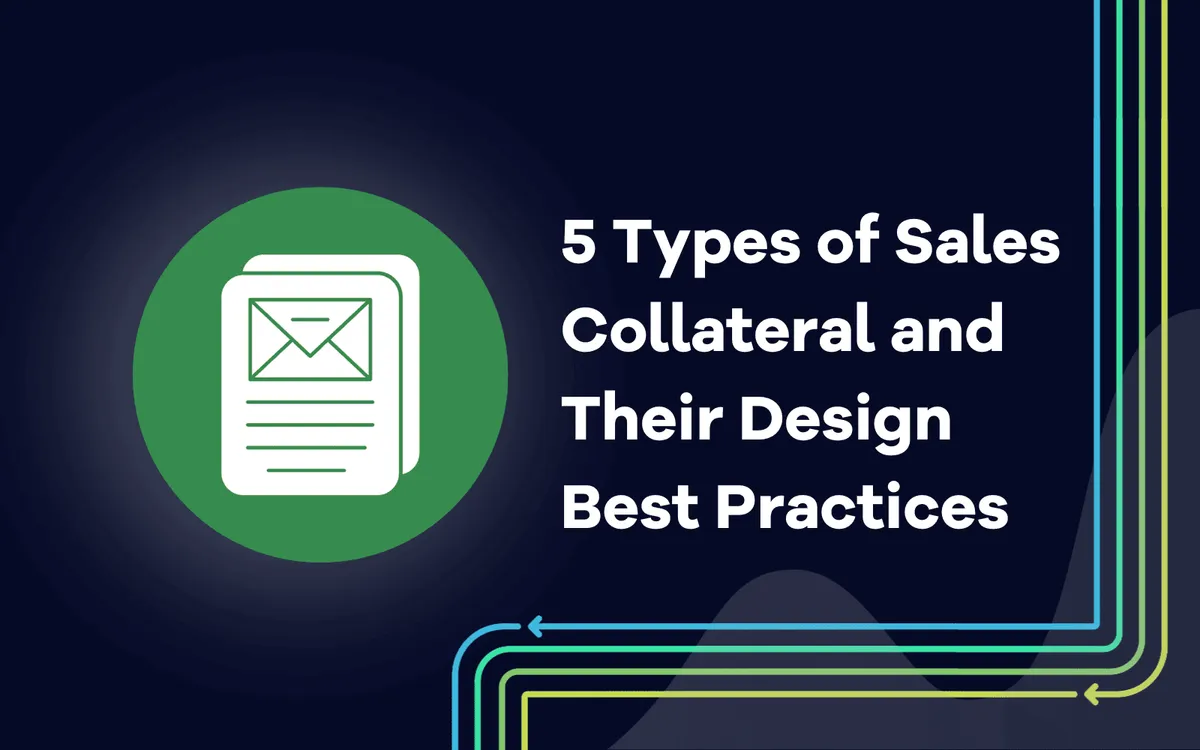
5 Types of Sales Collateral and Their Design Best Practices

Carl Torrence
November 23, 2023
Explore the world of sales collateral with insights into 5 types and their design best practices. Elevate your marketing game with this comprehensive guide on creating impactful sales materials.
Sales are tricky. You’ll often find sales reps searching for that one thing to give them an edge. Perhaps it is sales collateral — a trusty sidekick to your sales pitch.
Done right, it can give your conversations extra push toward a 'yes.'
But here’s the thing: not all tools in your sales toolkit shine as brightly. Some might help you start the conversation, while others can be the final nudge that potential clients need. You design sales collateral by considering the users’ needs.
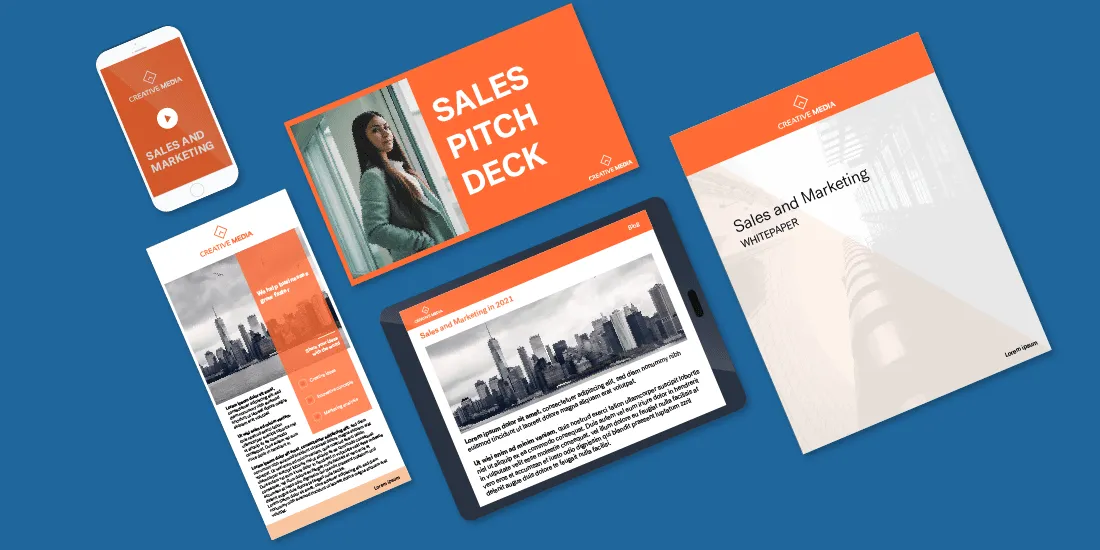
Source: Beautiful.AI
Sure, you wouldn't use a hammer for a screw, and that's why you shouldn't be using a product brochure where a case study might be more effective.
Let's consider an example. You’re in a meeting, and you mention how your product boosted another company's sales by 30%. Impressive, right? Now, imagine showing them a beautifully designed case study coupled with a client testimony highlighting that achievement.
Think it's a game-changer?
Or imagine a lead is interested but on the fence. They've heard your pitch but would need something tangible, something they can mull over with a cup of coffee. Here, a well-crafted product brochure or an informative white paper can do the trick.
That’s the power of designing top-quality sales collateral.
Let us now understand its different types before navigating ways to design sales collateral that along with best practices to drive conversions.
#1. Request for Quote (RFQ) Documents
The B2B industry involves transactions where high-value and complex purchases are involved. Often, you’d want to provide your B2B clients with RFQ that acts as a sales collateral that helps push the sales team to convert the lead into a user.
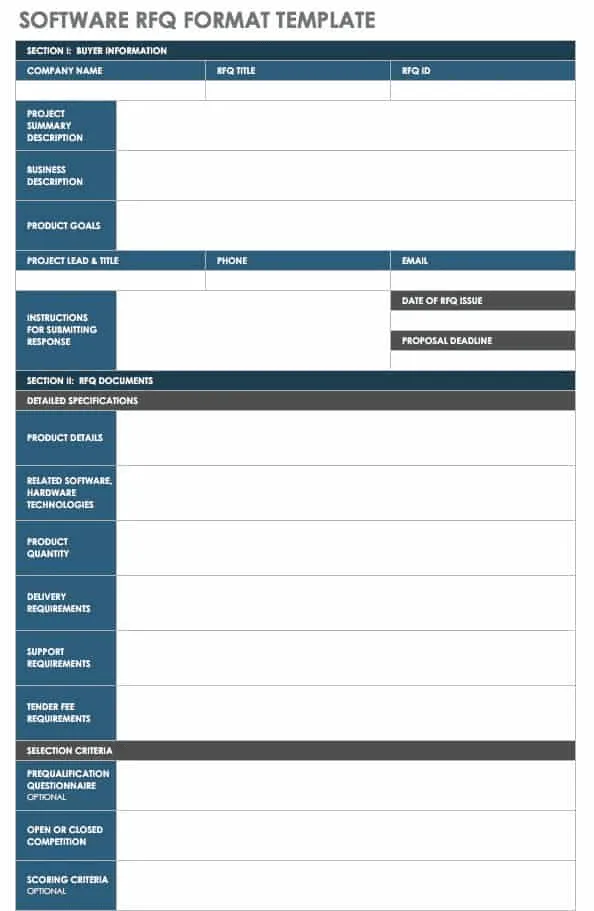
Source: Smartsheet
When preparing sales collateral in response to an RFQ (Request for Quote), it is essential to consider all aspects that address the users' concerns. Treat this as a formal document that presents the best price while ensuring consistency.
Design best practices for RFQs:
Clear specifications: Mention all possible product and service requirements since it helps potential suppliers understand and meet your expectations.
Evaluation criteria: Design sales collateral in a way that highlights how you offer clients a way to evaluate your quotes. Whether it's based on cost, quality, delivery timelines, or other factors, being transparent can provide more conviction.
Contact details: Provide details for clarifications that ensure potential buyers can reach out with queries, leading to more accurate bids.
Transparency: Outline the scope of your SaaS offerings along with the specifics that provide lead the most accurate quote possible and feel confident in the process.
#2. Case Studies
Users love to hear stories of other customers, and they often get inspiration from those who have successfully used a particular software they look forward to buying.
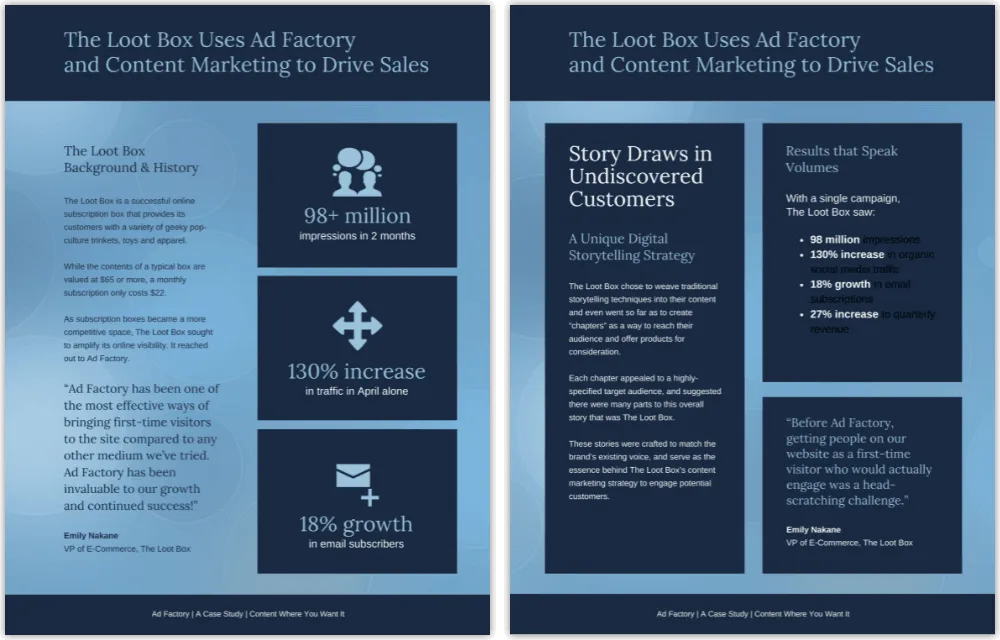
Source: Venngage
Therefore, case studies can act as powerful sales collateral that tells the story of how your product or service has helped a client overcome challenges and achieve success. Designing case studies will require leveraging a relatable narrative that blends numbers with human elements.
Sales collateral design best practices
Story flow: To design sales collateral like a case study, you must have a story flow. For this, begin with a clear beginning, middle, and end. Therefore, an ideal flow will be to introduce a client, highlight the challenge, and describe the solution your software offers. Lastly, include how your solutions provided the best possible results and the client's testimony.
Visual aids: Ensure your case studies have relevant images, charts, and graphs to make data more digestible. A compelling visual can better communicate a point than a paragraph.
Consistent branding: Use brand colors, fonts, and logos throughout your case study. This not only looks professional but also reinforces brand recall.
Easy navigation: A lengthy case study should include a table of contents or clickable sections. This helps readers jump to the information they're most interested in, ensuring seamless navigation.
Design consistency: When you are out there to design sales collateral in the form of case study, it needs maintaining uniformity across different cases you create. This provides a cohesive brand experience for readers exploring more than one case study.
Interactive elements: If you provide an online case study, consider adding interactive sections. Also, hover-over tooltips for more info or embedded video testimonials can go a long way when creating case studies as a part of sales collateral.
Call-to-action (CTA): End with a clear CTA when crafting a case study for sales collateral, as this helps guide the reader on the next steps. This includes getting in touch, reading another case study, or trying out a product demo.
#3. Product Brochures
Consider crafting compelling product descriptions in brochures as they are the mini-biography of your software. Design sales collateral like brochures with an aim to provide leads with a quick snapshot of what you’re offering.
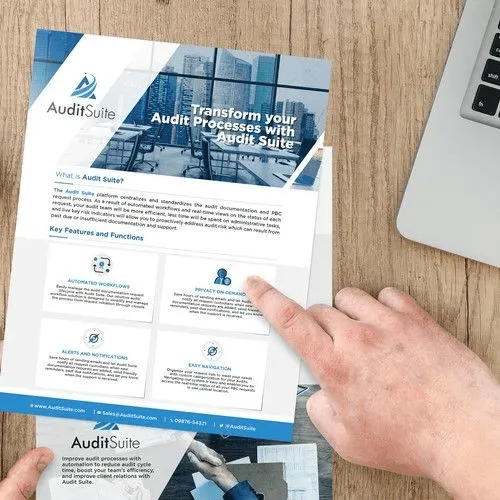
Source: Pinimg
While it’s tempting to jam-pack them with information, less is often more. A good practice is to have clear images, highlight key features, and balance text with visuals.
Key design aspects to consider
High-quality images: Product brochures should have images reflecting the quality and essence of the product. For this, consider designing sales collateral with professional product photography that looks attractive and compels readers to explore more.
Leave whitespace: A sales collateral design for the brochure should be aimed at making it easier for readers to comprehend the information. This way, whitespace guides the reader's eyes and makes the brochure more readable to push conversion.
Consistent branding: Ensure your brochure resonates with your identity by including consistent colors, typography, and logos. This is a vital aspect when you design sales collateral to create an instant impact on the reader
Draft compelling headlines: The first thing readers usually notice is the headline. Therefore, keep it catchy and compelling enough to grab their immediate attention.
Embedded QR codes: Digital connectivity simplifies transactions and provides steps of action for prospects. Here, adding QR codes leading to product videos or detailed specifications can help redirect users to take the next best action.
Use icons: Create brochures that are more image-centric by using icons instead of long texts to represent product features or benefits. They’re visually appealing and convey messages quickly.
Easy-to-read fonts: While creativity is appreciated, always prioritize legibility and emphasize how it is easy to read and understand information. Here, avoid using overly decorative fonts that are hard to read.
Include infographics and illustrations: Wherever possible, visualize complex information by incorporating infographics and illustrations that simplify complicated concepts.
#4. Testimonials and Client Reviews
There's no better salesperson than a satisfied customer. Gather genuine feedback and present it attractively by way of testimonials.
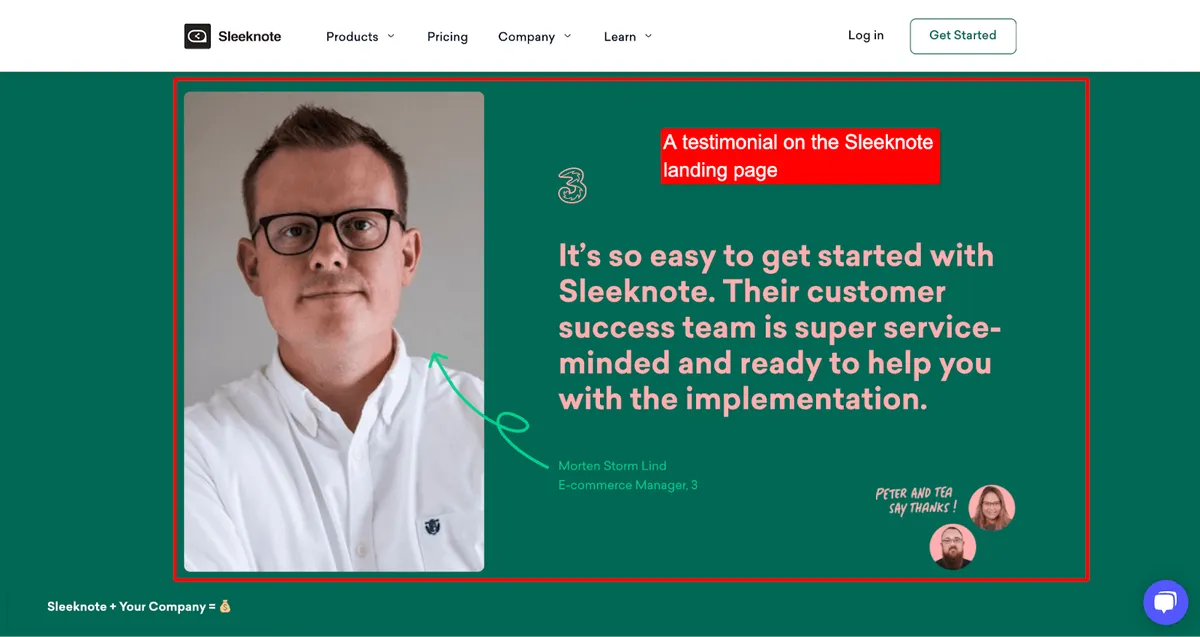
Source:Roastmylandingpage
Sales collaterals should consider leveraging the power of reviews more cohesively. That said, do not just mention a quote. Instead, add a headshot and provide a brief story about the client and their names (with designation if they agree). It makes the testimonial feel real and relatable.
How to ensure the best design for these
Real faces: A well-designed testimonial as sales collateral should have real faces to add authenticity.
Highlighted text: Design sales collateral with an emphasis on positive phrases in bold or a different color.
Keep it short: If a testimonial is long, extract the most impactful part and provide the crux of the information by keeping the message genuine.
Varied presentation: Not all testimonials need to be in a quote format. Therefore, when you design sales collateral, try transforming some into short stories, while others may fit in a graphical format like infographics.
User-friendly typography: Design sales collateral in a way where the font size is readable and ensure they are not overly ornate. The focus should be on the content of the testimonial.
Add credibility with company logos: Earning a testimonial from a client working with a recognized company or brand is something you’d consider showcasing. Therefore, add their brand’s logo (with permission) to enhance credibility.
Use pull quotes: For longer testimonials or client stories, pull out a particularly powerful quote and emphasize it in a larger font or distinct style.
#5. White Papers
One of the best ways to showcase your subject-matter expertise and product authority is to create white papers. These are detailed reports on a particular topic, showcasing in-depth knowledge and expertise.
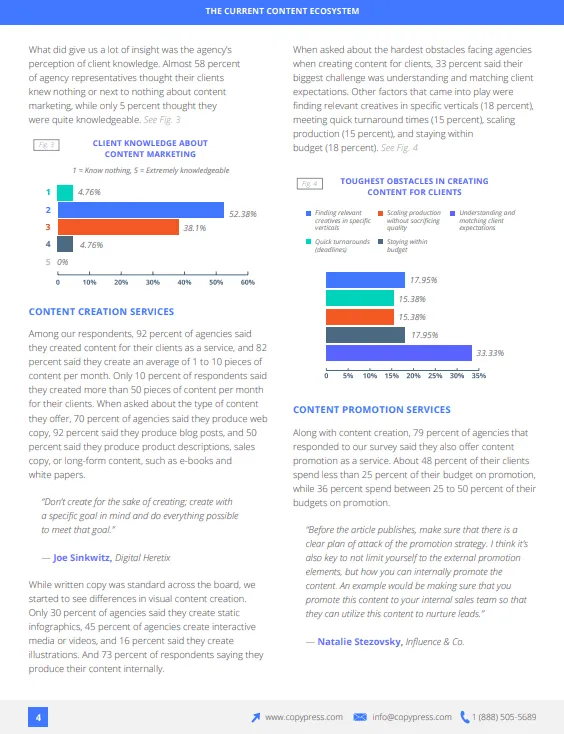
Source: Copypress
That said, white papers are not for every client but for those interested in the nitty-gritty details. It provides invaluable information that helps them understand the product thoroughly. Therefore, keep such white papers engaging by adding visuals and infographics that break up the text to make it digestible.
Collateral design tips to consider
A. Structured layout
Table of Contents: Especially for longer white papers, a clickable table of contents can be a useful navigation aid.
Page numbering: When you design sales collateral, especially white papers, it should help readers refer back to specific sections. So, make sure to add page numbers at the footer.
B. Infographics and diagrams
Consistent color palette: Understand color psychology to craft a message through emotional palettes where graphics align with your brand's color scheme. Ensure it remains consistent with the theme of the white paper.
Annotations: Add pointers or short notes alongside graphics to clarify complex topics.
C. Interactive elements
Hyperlinked references: Cite the sources or provide an additional reading that allows readers easy access to the original content.
Embedded videos: White papers should be designed to have space for embedded videos. So, if a topic within your white paper has a corresponding video explanation, consider embedding it directly into the document.
D. Readable typography
Font choice: Opt for clear, easily readable fonts. Steer clear from using decorative font types.
Font size variation: Design your white paper that clearly distinguishes between headings, subheadings, and body text using varying font sizes and weights.
E. Professional imagery
Relevant images: Support white paper text with images that add value. This includes photographs of a discussed product, process, and how-to tips.
Image captions: A good practice when you create sales collateral is to include captions that demonstrate the significance of an image in the context of the content.
Wrapping Up
Sales collaterals play a key in a business's growth story. So, no matter your preferred form of collaterals, introduce your offerings in an exciting manner that compels viewers to act. This can be pushing a sales inquiry, asking for a product demo, or getting on a call with a sales rep.
Remember, each type of collateral serves a unique purpose in guiding potential customers through the decision-making journey. However, it's about more than just having materials in place but designing them effectively to drive actions.
Design sales collateral with consistency, and creativity that make all the difference in resonating with your audience. Remember some of the aforementioned tips when creating sales collaterals to outshine the competition and win over more customers.
Related blog posts
The Hidden Flaws in Search Volumes and How to Solve Them
Learn how AI Search Volume delivers reliable search volumes by combining GKP, GSC, and Trends so that you can prioritize the right keywords.
1 July 2025
AI Overviews Are Taking Over SERPs
From traffic drops to decreasing CTRs, AI Overviews are shaking up SEO. Learn what is happening and how AccuRanker helps you track AIO.
25 June 2025
How AccuRanker’s AI Models Fix Inaccurate SEO Data
Struggling with unreliable SEO data? Discover how AccuRanker’s CTR, Search Intent, Search Volume, and Share of Voice deliver accurate insights.
1 June 2025




